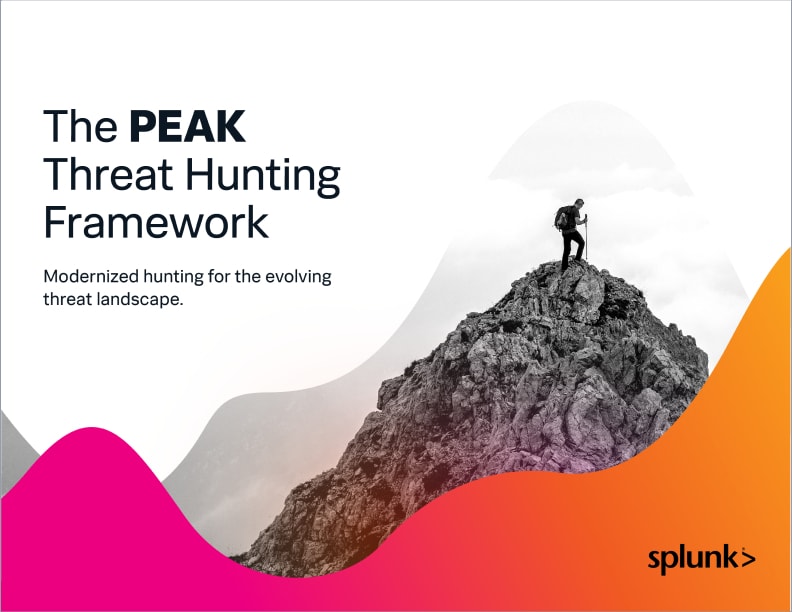Cyber Counterintelligence (CCI): Offensive & Defensive Strategies for Cybersecurity

Armed with innovative techniques, cyber attackers today come from various organized cybercrime groups, foreign intelligence services and other competitor organizations. With more sophisticated attacking techniques developed daily by such attackers, organizations must know their purpose and behaviors in advance — and devise strategies to avoid them.
Cyber counterintelligence is an effective way to improve your cybersecurity posture. The article explains:
- Cyber counterintelligence and its benefits
- Common defensive and offensive techniques
- Challenges that CCI can’t always overcome
- Who is best suited to counterintelligence
What is cyber counterintelligence (CCI)?
Cyber counterintelligence (CCI) is one of many intentional approaches that organizations can take to prevent cyber threats posed by malicious actors like:
- Criminal organizations
- Foreign intelligence services
- Nation states
- Hacktivists
- Other malicious actors
CCI uses both offensive and defensive techniques to mitigate cyber threats.
(This aligns with the concepts of red teams and blue teams in security: red teams focus on defensive counterintelligence, often through ethical hacking, and blue teams go on the offensive to seek them out pre-emptively.)
Defensive vs offensive counterintelligence
Defensive CCI techniques involve security measures to identify potential threats and vulnerabilities in an organization's applications, networks, and systems before a cyber incident occurs. Defensive CCI enables organizations to reduce their overall threat landscape. Example techniques include:
- Penetration testing
- Threat hunting
- Threat intelligence
In contrast, offensive CCI uses techniques to deceive cybercriminals in order collect intelligence about their targeted operations. For example, using sockpuppets of fake persons and honeypots to lure attackers and gather valuable information about them.
Shortly, we’ll look at offensive and defensive strategies in more detail.
What are the benefits of CCI?
Sure, counterintelligence is useful in a lot of ways, with primary focus on these areas:
- Protecting your critical assets and information, such as defense information, health, economic and financial data, which can be stolen to gain competitive or political advantages.
- Understanding the latest TTP of attackers in order to devise better and more effective techniques to fight them.
- Reducing your organizations’ attack surfaces by identifying the vulnerabilities that exist within the systems, networks and applications in advance.
- Building business resilience, which relies on cyber and digital resilience. You can become more resilient by employing offensive and defensive OCI techniques.
Defensive cyber counterintelligence strategies
Defensive CCI involves an organization’s cybersecurity measures that mitigate the risks of cybersecurity incidents from internal and external threats. This includes proactive and reactive defense strategies to minimize the organization’s attack surface.

These strategies include a lot of what you might think of when you think of “security”:
- Traditional encryption
- Antivirus software
- Access controls like RBAC and ABAC
- Firewall systems
- Advanced techniques like penetration testing, threat hunting and vulnerability assessments
Penetration testing
Penetration testing is a most common defensive CCI strategy. Its whole aim is to detect vulnerabilities in an organization’s networks, systems and applications. The team that carries out penetration testing is often known as the red team. Red teams aim to understand the attackers' tactics, and they can start by looking at penetration opportunities within their own network.
The red team first examines the existing cyber security measures and tries to penetrate the system using bypassing the defense mechanisms. This will enable the security teams to identify weaknesses in the existing applications, systems, and networks and fix them before an attack takes place.
Threat hunting
Threat hunting is a proactive approach to cybersecurity in which security teams discover threats before they attack the systems. With threat hunting, organizations can find even more sophisticated threats that can go undetected by existing security measures, such as fileless malware.
It begins with malicious activity triggers and then proceeds with analysis and threat resolution phases. Security teams use a variety of tools and technologies to automate threat hunting.
(Compare threat hunting with threat detecting.)
Regular vulnerability assessments
Vulnerability assessments are a traditional testing procedure that identifies and classifies potential vulnerabilities in all organizations’ applications and all other IT infrastructure. Then the vulnerabilities can be prioritized based on their classifications and remediate most critical vulnerabilities faster.
Security teams employ vulnerability scanning tools to automate the assessments. For example, vulnerability assessment can be performed in codebases to identify codes that can lead to cyber incidents. These assessments help organizations to improve their defenses against known vulnerabilities.
(Read more about the CVE and prioritizing based on CVE severity.)
Threat Intelligence
Threat intelligence is the intelligence gathered by processing and analyzing cyber incidents that happened in the past and recently. This information will reveal threat actors' tactics, techniques, and procedures. This defensive CCI method allows organizations to:
- Predict the attacks that could occur in the future.
- Identify the defense mechanisms to employ in order to prevent them.
(Read more about cyber threat intelligence)
Offensive cyber counterintelligence strategies
In offensive CCI, security teams aim to gather as much information as possible about the cybercriminals’ tactics and methods of attack executions. They use special techniques to attract cyber attackers by setting traps or disrupting their activities.
Some organizations may go beyond that and actively attack cyber criminals. Let’ take a look at some common offensive CCI techniques used worldwide.
Sockpuppets
Sockpuppets are fake people (profiles, avatars) created to deceive other people. They usually have a false online and social media presence mimicking a true individual — one type of social engineering. People might use sockpuppets for a variety reasons, though malicious purposes tend to include:
- Cyberbullying
- Spreading false information to get others to believe a certain narrative
- Manipulating online discussions
In the context of CCI, these fake identities enable organizations to gather information about a potential hacker and learn their behaviors and tactics secretly…without letting the attacker know. Effective sockpuppets are difficult to detect and even can infiltrate the attackers’ intelligence operations and their potential targets.
Honeypots
As the name implies, honeypots are baits that lure attackers to perform malicious operations and expose valuable information, like the attackers’ intentions and techniques used to exploit vulnerabilities.
Honeypots work by deliberately leaving networks, systems and applications vulnerable so that attackers exploit them to gain unauthorized access. Honeypots tend to fall into two categories:
- Production environment. Some organizations use honeypots in online, prod systems or apps to divert the attackers’ attention to them and reduce the actual systems’ exposure to cyber-attacks.
- Research environments. Other honeypots can be set up purely for research purposes.
For example, suppose your organization has a payment system that criminals frequently target. You can set up a honeypot in the form of a fake payment system — the fake one mimics the actual one but with vulnerabilities that cybercriminals can exploit. Once the attackers have gained access to the system, your security analysts can track and analyze their behavior.
(Read our full honeypot explainer.)
Honeynets
A honeynet is a network of multiple honeypots that simulate an actual network. This decoy network can contain multiple servers with different operating systems. Vulnerabilities like open ports are introduced to enable attackers to infiltrate the network.
A honeynet typically consists of a honeywell that monitors incoming traffic and forwards them to honeypot servers. Therefore, organizations can use honeynets as entry points for attackers into a system. Using honeynets over honeypots is advantageous because a honeynet can more effectively mimic a real (authentic) system.
Beaconing implants
An emerging offensive CCI technique is implanting a beacon into sensitive documents, such as intellectual property. A beacon is a device or script that sends signals upon access to the document. When an unauthorized actor accesses the document, the beacon will alert the relevant parties monitoring it — aka your security team!
Some beaconing systems can access information from intruders to reveal valuable information about them. However, these beaconing implants can send alerts even if authorized individuals have accessed the document.
Challenges with cyber counterintelligence
As with most things in cybersecurity, there is always a caveat. Here, it is this: not all CCI techniques are always effective. Let’s take a look at these common scenarios.
These techniques can fail
Even though certain techniques can lure attackers, most cybercriminals know that they are being monitored—so many know how to avoid falling victim to them.
Also, since honeypots leave the doors open to your systems, attackers can gain advantages from that opportunity and compromise the real systems using more advanced techniques.
Expensive
CCI requires special security techniques, which can be costly, and needs experts in those areas. For example, penetration testing requires a dedicated team of professionals who know the TTPs of cyber criminals. Employing These techniques can be expensive for organizations with limited budgets. Also, some techniques require special machines and devices to set up as traps to lure attackers.
The takeaway here is this: CCI is not suitable for every single organization out there. In fact, CCI is best suited for organizations that can find the right people, right resources and appropriate budgets to deploy them. Otherwise, you’re spending resources on something that is already set up to fail.
Legal issues
Cyber counterintelligence involves monitoring other competitor organizations and nations to gather information. This monitoring without the consent of organizations and individuals can become a serious offense under some countries' privacy and security laws.
In short, CCI can bring out compliance and legal issues, resulting in huge fines. So, any organizations that are employ certain techniques must be aware of legal matters and the compliance of performance monitoring.
False positives are possible!
Some CCI techniques, like beaconing implants and sockpuppets, can even flag innocent individuals and organizations as possible attackers. These false positives can result in reputational damages to the organization and loss of good business clients.
Going on the counteroffensive
Yes, cyber counterintelligence can be an effective technique to mitigate cyber threats posed by malicious actors. Involving both defensive and offensive techniques, some look at what’s currently possible and others aim to lure actors in to study their approaches.
Despite CCI's advantages, there are several disadvantages, like the costs involved, the possibility of failure, false positives and legal issues. However, CCI can be seen as a better strategy to improve any organization’s defenses to mitigate cyber-attacks from rival countries, organizations, and other malicious actors.
See an error or have a suggestion? Please let us know by emailing splunkblogs@cisco.com.
This posting does not necessarily represent Splunk's position, strategies or opinion.
Related Articles
About Splunk
The world’s leading organizations rely on Splunk, a Cisco company, to continuously strengthen digital resilience with our unified security and observability platform, powered by industry-leading AI.
Our customers trust Splunk’s award-winning security and observability solutions to secure and improve the reliability of their complex digital environments, at any scale.


